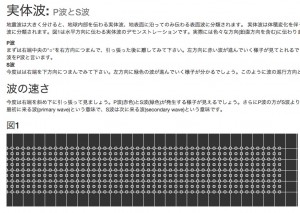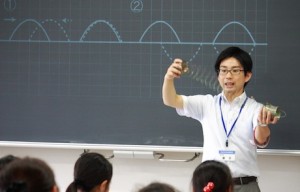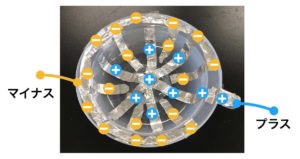Earthquake Lesson Revamp: The Mind-Blowing Digital Tool That Makes P-Waves and S-Waves Click!
Ken Kuwako, Your Science Trainer. Every Day is an Experiment.
Today, I’m thrilled to share an absolute gem of a digital tool that will dramatically spice up your earthquake lessons. A colleague told me about this resource, created by Dr. Kiwamu Nishida from the Earthquake Research Institute at the University of Tokyo, and honestly, I was speechless! The first time I saw it, I was glued to the screen with my jaw dropped.
It’s notoriously difficult to grasp the concept of “shaking” in an earthquake. In particular, getting students to intuitively understand the difference between P-waves (Primary/Compressional waves) and S-waves (Secondary/Shear waves) is a monumental challenge. But this one tool instantly solves that problem. By simply dragging your mouse, you can reproduce everything right before your eyes—from the generation and propagation of seismic waves to their reflection. This is, without exaggeration, a dream come true for science educators. Seeing is believing! You can find it on Dr. Nishida’s website here. Click the link and try it out! For now, I’ve captured some screenshots to show you.
http://www.eri.u-tokyo.ac.jp/people/knishida/Seismology/body_wave.html
🖱️ Drag Your Mouse, Generate Seismic Waves!
Let’s take a look at the photos.
Photo demonstration:

When you place your mouse over the screen and drag it upward…



… an S-wave (Shear wave) is generated. And look at what happens at the boundary wall!


Fixed-end reflection! Amazing!!
Next, let’s try dragging it horizontally. This produces:



A P-wave (Compressional wave)! But the fun doesn’t stop there. Now, try dragging it diagonally!

Incredible! Both P-waves and S-waves are generated simultaneously!

And the P-wave is faster!

We’re witnessing a perfect recreation of seismic waves. The P-wave has now reflected off the left boundary.



What a fantastic teaching tool!
💡 3 Key Reasons This Tool is Great for the Classroom
Here’s why this digital resource is a must-have for your lessons:
The motion is slow and easy to follow:
Many simulations move too fast for a teacher to explain what’s happening. With this tool, the waves propagate slowly, allowing you to narrate and explain the physics in real-time.
Color coding clarifies wave types:
P-waves are shown in red, and S-waves are in green. This visual distinction makes it incredibly easy for students to grasp the difference between the two.
You can observe wave reflection:
The left boundary is set as a fixed end and the right as a free end, so you can observe the fascinating phenomenon of wave reflection in action.
This simulation is packed with features that naturally spark students’ curiosity. It helps them visually solve questions like: Why are P-waves faster? and Why do seismic waves reflect? I highly recommend using a projector to display this on a large screen in your classroom and explore the amazing world of seismic waves with your students!
Inquiries & Contact
Discover more about the wonders of science! I frequently post clear, easy-to-understand explanations of fun science experiments you can do at home, along with tips and tricks. Feel free to browse around!
About the operator, Ken Kuwako: Click Here
For various requests (writing, lectures, science classes, TV supervision, appearances, etc.): Click Here
* Get updates on new articles by following me on X!
![]() I share experiment videos on my Science Channel on YouTube!
I share experiment videos on my Science Channel on YouTube!



